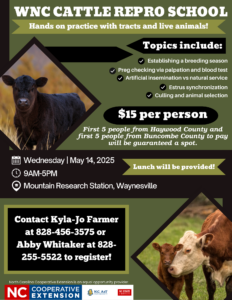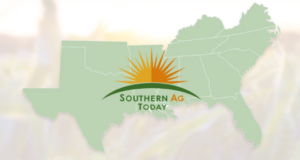
New World Screwworm- Updates and NCDA&CS State Vet's Office Webinar
The New World Screwworm (NWS), Cochliomyia hominivorax, is a devastating parasite primarily affecting warm-blooded animals, including livestock, wildlife, pets, …


El inglés es el idioma de control de esta página. En la medida en que haya algún conflicto entre la traducción al inglés y la traducción, el inglés prevalece.
Al hacer clic en el enlace de traducción se activa un servicio de traducción gratuito para convertir la página al español. Al igual que con cualquier traducción por Internet, la conversión no es sensible al contexto y puede que no traduzca el texto en su significado original. NC State Extension no garantiza la exactitud del texto traducido. Por favor, tenga en cuenta que algunas aplicaciones y/o servicios pueden no funcionar como se espera cuando se traducen.
Inglês é o idioma de controle desta página. Na medida que haja algum conflito entre o texto original em Inglês e a tradução, o Inglês prevalece.
Ao clicar no link de tradução, um serviço gratuito de tradução será ativado para converter a página para o Português. Como em qualquer tradução pela internet, a conversão não é sensivel ao contexto e pode não ocorrer a tradução para o significado orginal. O serviço de Extensão da Carolina do Norte (NC State Extension) não garante a exatidão do texto traduzido. Por favor, observe que algumas funções ou serviços podem não funcionar como esperado após a tradução.
English is the controlling language of this page. To the extent there is any conflict between the English text and the translation, English controls.
Clicking on the translation link activates a free translation service to convert the page to Spanish. As with any Internet translation, the conversion is not context-sensitive and may not translate the text to its original meaning. NC State Extension does not guarantee the accuracy of the translated text. Please note that some applications and/or services may not function as expected when translated.
Collapse ▲
The New World Screwworm (NWS), Cochliomyia hominivorax, is a devastating parasite primarily affecting warm-blooded animals, including livestock, wildlife, pets, …
H.R.1, more commonly referred to as the Big, Beautiful Bill was signed into law on July 4, 2025. With …
On July 4, 2025, Pres. Trump signed H.R.1, which is officially titled the “One Big, Beautiful Bill Act.” Under …

We are thrilled to announce that Dr. Benjamin Rajo has joined the Department of Animal Science as our new …

This month the North Carolina Sustainable Energy Association (NCSEA) released a report on the property tax impact of utility-scale …
Starting July 1st, 2025, North Carolina auto insurance policyholders should expect increases in their minimum coverage levels and, as …

Registration is now open for the sixth annual Southeast Value-Added Dairy Conference! This year the conference will be held at The University of …

The Southeast Dairy Business Innovation Initiative is pleased to provide stipends to assist value-added dairy producers or key personnel …

Goldman Sachs is offering a fully-funded, 12-week education cohort program for small businesses in North Carolina. Classes will begin in …

Register today for our 2025 WNC Cattle Reproduction School at the Mountain Research Station ( 265 Test Farm Rd, Waynesville, NC …

Do you want to learn more about milk production in dairy goats? Join us for our Goat Milk Production …

Join us on May 27th for the 2025 SE Cattle Reproduction School at the Southeastern Livestock Market in Chadbourn, …

The 5th Annual Chatham County Spring Ag Fest on March 29, 2025, was a success with a great crowd and beautiful …

On April 3, 2025, Nicholas Brown, editor at Farm Law & Tax, presented disaster tax rules for farmers in western …

Nicholas Brown, a contributor to Farm Law & Tax, recently wrote an article for Southern Ag Today that covered four tools that …

With Easter coming up, many parents will be faced with requests from their children to get a pet rabbit. …

Register today for our 2025 Sampson County Artificial Insemination School, focused on instructing extension agents, which will take place …

Register today for our 2025 2025 Central Cattle Reproduction School at the Upper Piedmont Research Station ( 1944 Wentworth St, Reidsville, …

Join us on May 16th for the 2025 Mid-Central Cattle Reproduction School at the Butner Beef Cattle Field Laboratory …

This publication discusses flying unmanned aerial vehicles (drones, model aircraft) for commercial purposes. You'll learn …
Animal necropsies attempt to determine the cause of death and whether it affects a concern …

This is chapter 9 of a comprehensive guide to postharvest engineering topics for the proper …

It is generally advised that all goats be vaccinated against overeating disease (enterotoxemia) and tetanus. …
This factsheet offers some information on the signs, symptoms, and treatment of coccidiosis, the most …

Information on the different types of lice, diagnosis and treatment is presented in this factsheet. …
This factsheet offers information on forage needs for meat goats, as well as typical grazing …
Goats raised for meat need high quality feed in most situations and require an optimum …